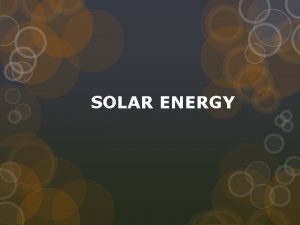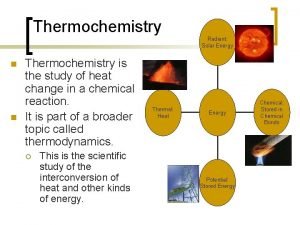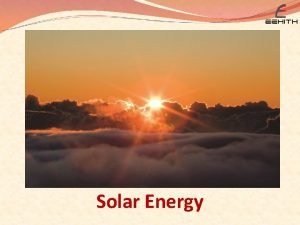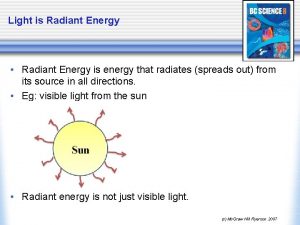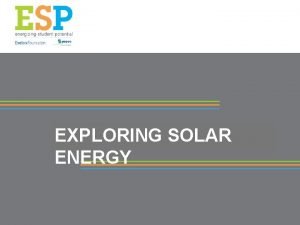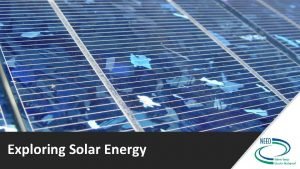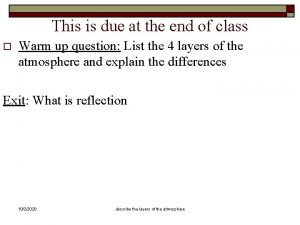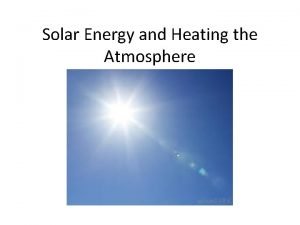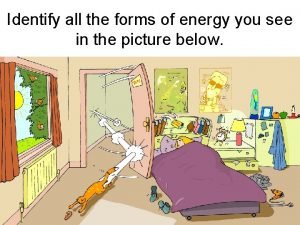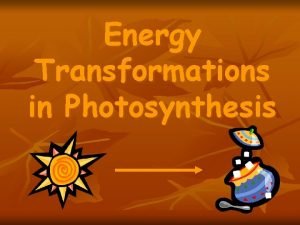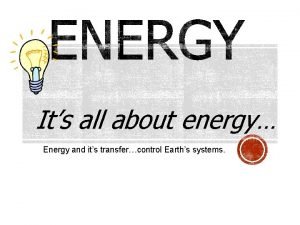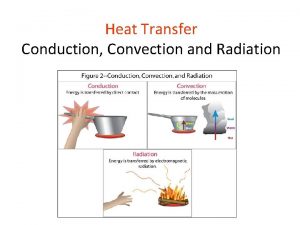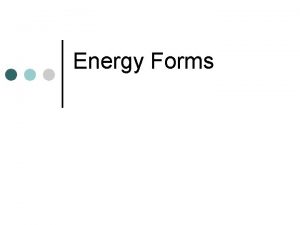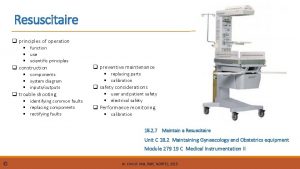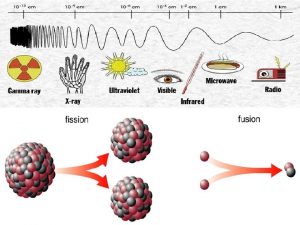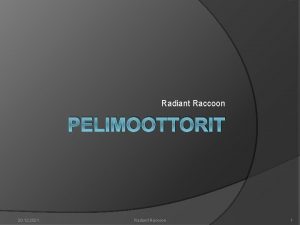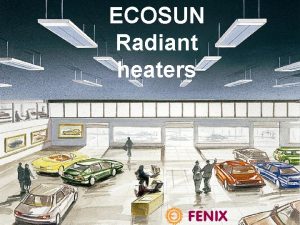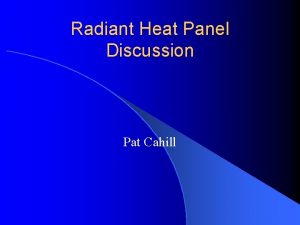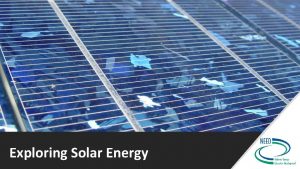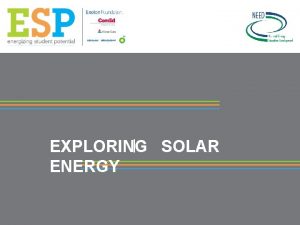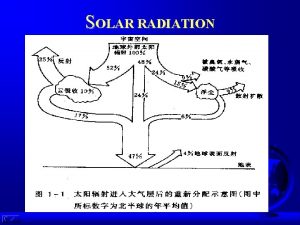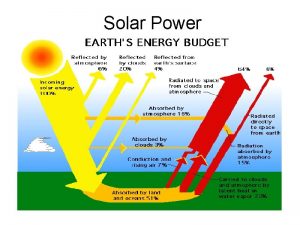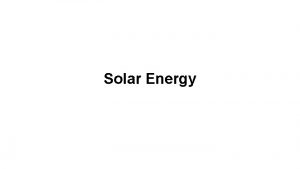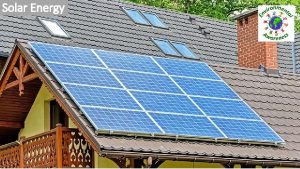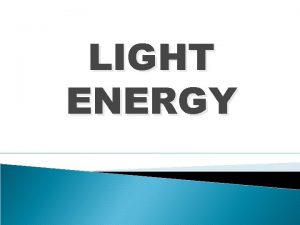Solar Energy Radiant Energy Solar Power PV Cell



















- Slides: 19

Solar Energy

Radiant Energy

Solar Power


PV Cell

PV Array Components o. PV Cells o. Modules o. Arrays

PV System Components

Solar Technologies o Daylighting o Passive Solar Heating o Active Solar Heating o Concentrating Solar Thermal o Photovoltaics (PV) o Solar Street Light

Active Solar Heating Flat Plate Collector Evacuated Tube Collector

Concentrating Solar Power

Power Tower

How a Power Tower Works


Photovoltaics

Solar Energy Overview Cost is part of Financial Evaluation but what typically determines a project cost? Ø Materials: • Solar Panels • Racking and mounting system(s) • Inverter • Net meter • Wiring Ø Labor • Design • Permitting • Installation labor Ø Other • Land (utility grade commercial only) • Tracking system (commercial only)

Solar Energy Overview Solar Photovoltaic Elements from Previous Slide Ø 1: Solar panels: Collect the sun’s energy and covert it into direct current (DC) electricity. The number of panels you need is determined by your electricity needs. Ø 2: An inverter: Converts the electricity from DC to alternating current (AC) electricity for use in your home. Ø 3: A bidirectional electric meter: Displays net power usage. When you generate more than you use, your meters spins backwards lowering your electricity bills. When you generate less, it spins forward but more slowly than it would otherwise. Ø 4: You produce your own electricity to be used throughout your home Ø 5: Utility Grid: All excess electricity generated by system goes to Utility Grid.

Advantages of Solar Energy o o o o o Clean & Sustainable Provide Electricity to Remote Places Has no moving parts Has better reliability and a 25 year warranty Requires less monitoring Does not require expensive maintenance Provides more predictable energy output based on BOM and NASA data. Better value for money in sites with average wind speeds less than 5 meters per second Is less conspicuous Is totally silent in operation Allows for quicker installation with less cable required Is less susceptible to lightning damage Is less susceptible to high wind damage Requires less space in most cases as the panels can be installed on a roof Virtually maintenance free Relatively easy to install Silent, no noise issues


 What is radiant light
What is radiant light Radiant solar energy
Radiant solar energy Why does a good absorber of radiant energy appear black?
Why does a good absorber of radiant energy appear black? Gravitational potential energy
Gravitational potential energy Radiant energy
Radiant energy Radiant energy.
Radiant energy. Radiant energy
Radiant energy Solar energy nuclear fusion
Solar energy nuclear fusion Radiant energy
Radiant energy Radiant energy
Radiant energy Identify the energy conversions in the illustrations below.
Identify the energy conversions in the illustrations below. Radiant energy transformation
Radiant energy transformation It is a form of energy that travels through space
It is a form of energy that travels through space Example of convection
Example of convection What is energy in science
What is energy in science Solar power satellites and microwave power transmission
Solar power satellites and microwave power transmission Inexhaustible source of energy
Inexhaustible source of energy Real power formula
Real power formula Indirect forms of solar energy
Indirect forms of solar energy Resuscitaires
Resuscitaires
